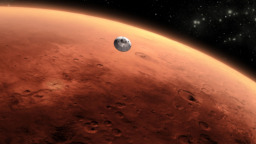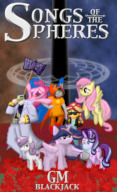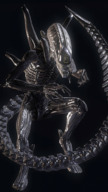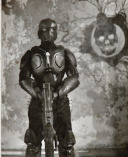
Appendix: Technological Glossary
ARES III TECHNOLOGY
HERMES - The most expensive single thing ever built by mankind. Designed to operate in space for a thirty-year lifespan, the ship transports crew members and the Mars Descent Vehicle (see separate entry) from Earth to Mars and then returns the crew and surface samples to Earth. The ship is powered by nuclear-powered VASIMR ion engines that use xenon ions to produce continuous thrust. The ship is designed to spin on its central axis to provide Mars-level artificial gravity via centrifugal force in a ring of habitat compartments. The ship has a vehicular air lock in the nose and two other airlocks down the ship's spine, all of which are capable of hard docking with compatible vessels or operating as points of exit or entry for astronauts on EVA (extravehicular activity).
ARES PREFABRICATED SURFACE HABITAT ("THE HAB") - An inflatable, climate-controlled, radiation-shielded habitat used by the expeditions of Project Ares for between seven and sixty sols (Martian days) on the surface of Mars. The Hab is assembled from supplies contained in fourteen pre-supply probes launched years ahead of the arrival of the expedition; the crew is trained to unpack and assemble the Hab in a single eight-hour EVA. The Hab has three airlocks, fifteen hydrogen electrical storage units rated for 9000 watt-hours of storage each, storage for 300 liters of water, 100 liters of compressed oxygen, 50 liters of compressed nitrogen, and food supplies for 150% of the expected mission duration of the expedition in progress, plus a small geology-chemistry lab, a microwave oven for heating food packs, six bunks, and a decontamination shower to clean perchlorate-tainted surface dust off the suits and crew.
HAB CANVAS - An extremely strong flexible multi-layer laminate fabric. The fabric is designed to provide radiation shielding and atmospheric containment under extreme differential pressure for the Hab. It is assembled and held together through the use of a special binary resin that, when mixed, hardens into a near-perfect seal in sixty seconds even under normal Martian surface conditions. This resin comes both in tubes for spot use and "seal strips" for rapid application along long, straight seams.
ARES EXPEDITION ROVER - A large four-wheeled conveyance designed for occupancy of one driver and two passengers plus both internally and externally stowed cargo. The driver compartment is internally pressurized and climate controlled to permit the removal of space suits during operation. Each rover has four independently driven electric wheels powered by a lithium-ion 9000 watt-hour battery. Each Ares mission is supplied two rovers which, in case of emergency, can be linked together using specialized tow hooks that allow the sharing of power and air between the vehicles. Two spare wheels are shipped in supply in case of defects or breakage. Top speed: 25 km/h. Maximum range: 35 km. Maximum mission travel radius: 10 km. The loss of one rover is automatic grounds for scrub of all subsequent rover-based EVA tasks and potential grounds for a mission abort. Carbon dioxide levels inside the rover are controlled by use of single-use, non-recyclable lithium hydroxide filters.
ATMOSPHERIC REGULATOR - A Hab subsystem which detects and regulates the amounts of oxygen, nitrogen, and carbon dioxide in the Hab's atmosphere. Regulation of these levels is done by either adding more of the desired substance from storage tanks or removing it by a fractionation process utilizing Mars's natural cold. Air is passed through an external component (AREC) outside the containment of the Hab, reducing the energy required to cool the air in question to a liquid. The differing points of condensation allows the atmospheric regulator to control which portions of the air are sent to storage tanks. The returning air is then heated electrically back to the internal temperature of the Hab. The atmospheric regulator cannot condense or separate gases lighter than nitrogen.
OXYGENATOR - A Hab subsystem that converts carbon dioxide, separated from the internal atmosphere by the atmospheric regulator, into breathable oxygen through the use of heating elements and catalysts. The resulting carbon residue is the primary waste product.
WATER RECLAIMER - A Hab subsystem that filters and purifies used water, including excess atmospheric water vapor, and returns the clean water to the storage tank for reuse. This system saves water weight of as much as four times the weight of the unit itself. The filtration systems require regular maintenance, but the filters themselves are reusable with a long service life.
ATMOSPHERIC CONTAINMENT GARMENTS ("space suit") - Come in two varieties: a normal version used for wear aboard Hermes, for use interfacing with a manned maneuvering unit (MMU) on spacewalks, or during descent and ascent to/from Mars; and a highly robust, wear-resistant surface suit specifically designed to limit damage from dust, rocks, regolith, etc. on the Martian surface. The surface suits in particular use non-reusable filters to scrub carbon dioxide from the internal atmosphere (of the same kind used in the rovers). The suits also have two liters of atmospheric storage (compressed liquid oxygen and nitrogen), a small water reservoir, short-range radio, and internal displays projected onto the inside of the helmet visor. Two cameras are mounted on the helmet and right arm. Internal batteries, good for twelve hours of continuous function, are recharged using special racks contained in the Hab and plugs available in the rovers. All helmets are standardized to be interchangeable with all suits; gloves, however, are custom-fit to each astronaut.
COMMUNICATIONS ARRAY - Two separate systems, connected via cable to the Hab's radio systems. Outgoing transmissions are conducted using a large parabolic tracking dish for direct communications to Earth. Incoming signals are received via a large array of small wire antennae to be spread across the surface near the Hab. In case of loss of the main communications system, the MAV communications systems are triply redundant, allowing direct communications with Earth, Hermes, or any of the many orbiters in Mars local space. Loss of main communications is a condition for mission abort. The Hab also has a simple broadcast beacon for use by the rover and suit navigation systems, separate from the main communications systems.
MARS DESCENT VEHICLE (MDV) - A capsule designed solely to bring the crew from Hermes to the expedition site on the Martian surface. Using a combination of heat shields, parachutes, and thrusters (powered by hydrazine), the capsule descends through the Martian atmosphere to a pinpoint targeted landing zone. Once the MDV commits to descent, there is no possible abort, nor any return to Hermes except via the MAV. The interior cabin of the MDV is almost identical to the MAV, with internal life support for up to forty-eight hours in case of contingencies involving Hab assembly.
MARS ASCENT VEHICLE (MAV) - The single largest and heaviest pre-supply payload delivered to Mars prior to a surface expedition. In order to save the weight of fuel necessary to reach orbit from the Martian surface (about the same weight as the empty, unfueled vehicle), the MAV lands on Mars two years prior to the human crew and uses a radioisotope thermal generator (RTG) to power a fuel plant that converts carbon dioxide from the Martian atmosphere into methane and oxygen. This process requires fifteen months.
The vehicle consists of a descent stage (containing heat shield, parachutes, and just enough thruster power for a controlled vertical landing, plus the RTG and fuel plant), two ascent stages (the first with multiple engines, the second with a single engine), and a two-deck capsule for the crew and cargo.
On-board life support is charged from Hab supplies and can hold up to three days of air. Solar panels enable a backup communications satellite mode in the event that an expedition is scrubbed before landing or if the MAV is unable to land. The MAV contains triply-redundant communications systems capable of establishing data links direct with Earth or with any spacecraft or satellite in or near Mars orbit.
The MAV is the single most mission critical piece of hardware in any Ares expedition. If a MAV is not fully functional, the expedition will not attempt a landing. If any contingency arises which would present a danger to the MAV, the mission will be immediately aborted and the astronauts will launch immediately for rendezvous with Hermes.
EQUESTRIAN TECHNOMANCY
AMICITAS - Equus's first purpose-built multiple-use spacecraft (as opposed to capsules and prefabricated habitat compartments). Originally designed by Twilight Sparkle as a test bed for magic-powered fuelless rocket systems, Amicitas was the first piloted vehicle to orbit the moon. Amicitas was pulled out of semi-retirement for use as the test bed for the final planned test flight of the Sparkle Drive (see below).
In the configuration used for the third flight of Amicitas, the ship interior was composed of three airtight chambers. The cockpit or bridge contained seating for seven and all controls required for operation of the ship, plus a non-dockable personnel airlock. The central compartment, the habitat deck, contained the food supplies for the voyage, the sleeping area, and a dorsal docking port for use with the joint space programs' space station or other craft. The rear compartment, the engineering deck, contained the Sparkle Drive and a massive array of mana batteries for use in powering both the Sparkle Drive and the three main orbital engines. Access to the engines and batteries is accomplished via an extra-large cargo air lock.
The exterior of the ship consisted of an outer hull shaped in a streamlined lifting-body configuration to allow a runway landing (although emergency parachutes were also available), three main engines for use in orbit or deep space, and eight maneuvering thruster blocks. Initial launch to orbit is accomplished by an array of external booster rockets using chemical propulsion. A water-based cooling system runs between the outer and inner hull to regulate the temperature of the ship while in space.
Electrical power was provided by a mana-to-electricity conversion system, with an emergency backup solar array deployable from a compartment above the bridge in case the converter failed. Communications with Equus were provided by a magic telepresence array that provided instant FTL video and audio communications with the ground. An electric radio with six pre-set frequency-modulation channels acted as an emergency backup communications system.
SPARKLE DRIVE - An enchanted artifact designed to teleport itself and anything attached to it a certain pre-set distance every time an electrical pulse is sent into its main crystal. As with more common teleportation spells, the magical energy required is proportional to the square of the distance traveled, but the time required for a teleport is virtually instantaneous regardless of distance. Thus, by teleporting very short distances hundreds of thousands of times per second, apparent velocities can be attained that would be impossible using reaction-based propulsion. However, the enchantment, being unintelligent, can only teleport a fixed distance in a specific orientation (usually aligned with the nose of the ship). The only exception is a special safety enchantment that forces the teleport to displace the destination the shortest possible distance required to avoid collisions or the coexistence of two different masses within the same space.
The Sparkle Drive avoids relativistic effects by bypassing them entirely. Post-teleport the momentum of the equipped craft remains precisely the same. However, by displacing itself from point to point in space without traversing the space between, the Drive can allow travel faster than light without actually achieving the velocity of light.
In practice, the Sparkle Drive consists of control systems, the core teleport-enchanted artifact, and an array of mana batteries which collect mana beyond the ability of the Drive alone and which moderate power flow and demand to the Drive.
MANA BATTERIES - Although all enchanted artifacts store magical energy, or mana, as part of their enchantment, artifacts specifically designed for no purpose other than to store mana for future use were not developed by ponykind prior to the Equestrian Space Race of 1006-1007 CR. Early models required manual charging by unicorns and thus were prone to discharge and exhaustion, but the most recent version of the enchantment allows automatic environmental recharging.
The mana batteries installed for Amicitas Flight Three were composed of a crystal cube (amethyst for preference) containing the battery enchantment, encased in an open metal frame which also included the terminals, charge readouts, and control switches between recharge mode (off) and discharge mode (on). Amicitas contained one hundred batteries as part of the Sparkle Drive power array, plus two separate emergency batteries for use in powering bridge control systems.
MANA-ELECTRIC CONVERTER - A system which converts mana drawn from a battery into direct-current electricity. The process works in part because magical energy has a much higher potential energy state than electrical charge; the process is not reversible, in the same way that a water wheel cannot be used to pump water upstream merely by reversing the rotation of the wheel.
LIFE SUPPORT TELEPORTATION SYSTEM - A system which has, at its core, two or three pairs of magically linked crystals. The larger crystal of the pair remains at base (specifically, the Life Support Monitor Building, Cape Friendship Space Center, Baltimare, Equestria) and powers the enchantment for both crystals. The smaller crystal rides in the space suit or spaceship being supplied with life support. Various external systems provide additional controls, including activating or deactivating transmission through the magic link. The system provides normal Equus atmosphere at Baltimare local pressure, cold water for drinking, and (in the case of spaceship life support systems) a small stream of hot water for use in reconstituting and heating dehydrated meals. The air system provides for two-way circulation of air in order to keep the astronaut's air clean; the water system is one-way.
The chief drawback to the system is that the trans-dimensional link which allows instant transmission of materials also disrupts a certain percentage of many if not most molecular bonds, particularly carbon bonds or any bond which might lead to an exothermic chemical reaction. Attempts to use the system to transmit liquid food have proven messy and disgusting; attempts to transmit rocket fuels like kerosene, alcohol, or hydrazine have proven disastrously explosive. Attempts to convert the system into a rocket engine in its own right have failed owing to the relative fragility of the crystals on the receiving end. Although experiments at ending the issue continue, they have taken a much lower priority compared to improving the performance of magic-powered thrusters and developing the Sparkle Drive.
TELEPRESENCE SPELL - An all-purpose audiovisual communications spell, producing live, real-time communications between multiple stations. The system cannot provide recordings on its own; recordings must be made by filming or taping the output using conventional recording devices. Each spacecraft launched from Equus contains a full telepresence array, powered by ambient magic. Spacesuits contain a weaker version of the spell with a limited range should the master spell be deactivated.
MAGIC THRUSTERS - A system invented by Twilight Sparkle that converts stored magic power into propulsive thrust. In theory the final development of this technology would be a rocket system requiring no fuel whatever. The three main engines equipped on Amicitas for its third flight, the current peak efficiency revision of the system, produce a combined thrust sufficient to hover approximately eighteen tons at one Equus gravity. In orbit, with the vessel fully crewed and stocked, this would produce a maximum acceleration of the roughly sixty-ton mass of about three meters per second per second. All Equus space suits are equipped with thruster packs based on the same technology; these packs are vastly more effective on the astronauts' smaller masses.
OTHER TECHNOLOGY
PATHFINDER and SOJOURNER - Launched from Earth in 1996, the first (and only) successful "Faster Better Cheaper" Mars probe landed in Ares Vallis in the southernmost region of Chryse Planitia in July 1997. The combined mission of the Pathfinder base station and the small Sojourner rover, planned for thirty days, lasted almost a hundred days before Pathfinder ceased operations. The exact cause of the shutdown is unknown, but is presumed to be failure of Pathfinder's battery.
Pathfinder, the mission's base station, operated a meteorological package and provided direct contact to Earth using an aimable high-gain antenna and a weaker low-gain antenna, originally designed for a maximum transmission rate of about 1400 baud at Earth-Mars closest approach. (Communications limits were due to the distance between worlds and the very low power levels available for the probe.) Pathfinder also had a dual-camera stereoscopic imager on a tall mast capable of producing 360-degree three-dimensional panoramic views. The rover Sojourner had a spectroscope capable of limited mineral analysis plus a trio of cameras used both for examining nearby rocks and testing self-driving and obstacle-avoidance algorithms.
Although the mission delivered real science achievements, its primary legacy is as proof of technology which would be used for much greater effect on future Mars missions.
SPACEX RED FALCON - An adaptation of the (in)famous "B.F.R.", Red Falcon is the single most powerful booster system ever put into regular service in lifting payloads into space. In its cargo configuration it is rated for delivery of up to forty tons of payload to the Martian surface during the Hohmann transfer window. (This amount decreases to twenty tons if the first stage is staged early for landing and reuse.) The Red Falcons used to provide most of the presupply launches for each Ares mission, plus most of the components of the current space station, represent SpaceX's main contribution to Project Ares.
BATHROOMS (in space) - Human or pony, Hab or spaceship or spacesuit, they are NEVER good enough. The less said the better.





















9284394 The very last time, this one. Check the author's note in the Tech Appendix.
9284403 I might be up for buying a hardcopy. If you're hitting Bronycon next year, you should have a few for the planned Bookstore
Hmmm... that is debatable. The ISS cost 150 Billion, which is a lot but in comparisson the 3 gorges dam in china cost 350 b. And the USA Interstate Highway cost some 450b. And then there are stuff like the Manhattan Project and WW2 pacific bases that are still classified and not financed in the normal sense that also cost an absurd.
Then again, if we are talking single thing than those would be kind of cheating. So the real competition is the Hydroeletric Dams and such.
9284453 Her, but sure thing. It'll go with her Certificate of Can't Get Fired by Order of the Crown.
Interesting info, probably would have been better as blog posts tagged to the story since it isn't actually story content.
Liquids don't like to be compressed
I can't remember if someone already brought that up, but using high melting point liquid that expands almost 7% when freezing for cooling in space is asking for trouble.
9284478
Hermes is vastly more capable than the ISS, though. It stands to reason that it would be vastly more expensive.
9284520 You can have the best of intentions and the highest possible ethics and still be a megalomaniac. It doesn't matter why you want to control the world, only that you do.
A good idea to include the extra chapters.
May I suggest adding another one with links to bonus material, like the artwork and the songs?
Also, found a last typo on the way to perfection:
Edit: fixed.
This is a good explanation for fuels that contains an oxidiser.
But, with some fuels that is just not the case.
And transferring pure oxygen has been done, in this story. If you just send the oxidiser by crystal, that's already a paradigm shift.
9284700 The tests in question have all been in atmosphere. Oxidizer was ready to hand. (Testing these systems in vacuum hasn't occurred to anyone on Equus yet.)
9284741
And priming the system hasn't been considered either. Fair enough.
But If nobody else did. Mark would have noticed the pure O2 transfer, with that engineering, problem-solving mind of his.
Pathfinder had 1400 baud. Wow. My first network modem was 1200. But, it had data compression, error correction, retransmission protocols and a processor at least 4 times more powerful than the computer it was connected to. But, it couldnt use a quarter of its available power to run multimedia programs or graphical games etc.
MN4, MP5, Z-Modem? So much fun by the time V.92 came round, 256 point Trellis coding?
Then again, the trick with space data, is what do you actually need to send. I would say a simple beep should be aimed for as much as possible. A lot of science can be done with a beep. After all, you cant do nothing with nothing to start.
Sigh, distracted by sardines. Information etc nicely rounding off the story. How big physically would this POD be, given I accidentally read a 420 page Sci Fi hardback on Tuesday night?
9284581
Unlike Earth space technologies, Equestrian systems can really ignore problems like these through use of a the system that teleports water (cold or hot) from Baltimare and can dump any excess through a simple safety valve.
I first read The Martian by getting it from a library, but today I actually bought my own copy. I discovered an issue with your description of Hermes: the book says it uses argon, but you've said it uses xenon.
The MAV being equipped with solar panels to act as a communication satalite in case of problems sounds odd, considering it has an RTG to provide power.
It does sound like a reasonable use after it's primary mission is concluded.
But in those cases, I'd expect JPL to just crash them near the HAB, for parts. Mostly the 4 radio's, before pathfinder-based communication is established.
9284068
Oh that explains a lot thanks! Would you consider writing a sequel to the Maretian about the next Ares Mission? I mainly just want to see them eat mars cherries
I know it's not exactly a technology, but I feel like it would be remiss not to include Pirate-Ninjas.
9284815
Of course they can ignore problems, but if something happens and they have to temporarily shut water off, or some place becomes colder that they expected, or that valve just freezes because below triple point, then their cooling system is ripped into pieces by ice.
9284651
You have to be watching a different show. Starlight never showed any interest in controlling the world. Ever. I even went back and watched those episodes. Never once did she show an interest in controlling the world, not even when she was talking to herself. She was never interested in power and never felt she was more important then anyone else. The fact she never capitalised on still having her talents shows this.
9284651
Well, defining it in such a way that even Celestia fits is kinda defeating the purpose of having that word around in the first place
Trying to stop Pinkie with logic does not compute! It does not make sense.
https://www.youtube.com/watch?v=xwdba9C2G14
9285386
I'm still wondering where the hell he got the idea that Starlight wanted to control the world. She wanted real friends. Everything she was involved in boiled down to that. She thought that without cutie marks the ponies in her village would always be her friends because there wold be no differaces to split them up . Twilight took away those ponies that she believed were her friends and wanted revenge by taking away Twilights friends in return. Cutie marks were just a cover for what the real problem was.
If it was all about power and controlling the world, Twilight would never have gotten through to her to begin with. Cause Twilight gave her what she really wanted. True friendship.
Th poll has a question “Who?” followed by the characters stuck on Mars, I took this to mean who was my favorite character, but clarification would be appreciated.
9285837 I didn't make the poll. Roll your own on that question.
9285399 Starlight blamed cutie marks for her lack of friends. Her ultimate goal was to abolish cutie marks. Our Little Town was just her first step towards conquering Equestria so she could make that a reality. Notice how gleeful she was at grabbing an alicorn's cutie mark at the time...
9285309 I tried to avoid putting anything into the appendix that didn't pre-exist the period of the story.
9284873 A deliberate substitution, since the experimental ion engines we've put into space so far used xenon. Argon is much more common, but xenon is a lot heavier on the atomic level and thus provides more kick.
9284581 Liquid gasses tend not to remain liquid if not compressed.
9284995 About how useful are electronics on Earth after they've hit a big stationary object (like, say, the ground) at 600 miles per hour?
9285926
Electronics? Most of them would be scrap metal. And even what survived would need repairs.
The thing is, with 2 MAVs, that's at least 2 radio's (each if I remember correctly.) there is a decent chance enough antennae would survive.
These are sturdy pieces of electronics, considering their importance.
Besides, it has a different application: inform mark and aliens that Earth is watching.
9285926
Gases don't liquefy above critical temperature, which is below -100℃ for both oxygen and nitrogen:
gashelium.com/wp-content/uploads/2015/03/Oxygen-Vapor-Pressure.GIF%DA%AF%D8%A7%D8%B2-%D8%A7%DA%A9%D8%B3%DB%8C%DA%98%D9%86.gif
overclock.net/photopost/data/89025/1/15/153b1558_nitrogen_vapor_pressure.gif
Liquids can be stored in dewars, but suits most likely just store gases in high pressure cylinders.
9285948 "Mars is trying to kill us! The dust storm, the perchlorates, the used spaceship that almost crashed right on top of us..."
"Actually, we did the spaceship thing."
"All right. Mars and NASA are trying to kill us!!"
9285257 Marsachino cherries?
9286174
I guess so! Also kinda fits since these will have been 'preserved' on mars for what, 4-5 years?
9284995 I think there was a mention of this in the book: the RTG was packed along because solar panels might be damaged during landing or covered with dust, but the fuel plant absolutely, positively HAD to have a reliable supply of power. That's the only reason an RTG was allowed anywhere near a manned space mission of any kind.
9287831
In the sol 68 log it is stated that the MAV runs on RTG power untill the crew arrive.
And in the rag-top conversion, solar panels are not mentioned as to be dumped.
As far as I can tell, it has no solar panels.
9288437
Even better, I think.
9288324 Except that it also mentions the com-sat fallback measure as the reason why Martinez had training to launch the MAV from the surface remotely from Hermes. The RTG is in the descent stage, which means it would not be available in that situation. It'd be left behind on the surface.
9288820
Fair point. That makes it so that a few hypothesis fit the data:
It has solar panels.
The RTG is in capsule.
I think there are good arguments for both, but let's go with the panels then.
well, that answers one of my questions.
9293692 There are obvious exceptions for Mercury probes, deep solar probes like Parker, and probes being deliberately dropped into the Sun.
9306201
(MOAR!)
RIIIIIIIIGHT!?
Good luck peanuts made yet another appearance at JPL today:
farm5.staticflickr.com/4869/45337160264_1d3222ac04_o.jpg
Mars InSight Pre-Landing (NHQ201811260005) by NASA HQ PHOTO, on Flickr
farm5.staticflickr.com/4874/32190050198_0fdf3944b7_o.jpg
Mars InSight Pre-Landing (NHQ201811260004) by NASA HQ PHOTO, on Flickr
9285926
It depends upon how well designed, built, and packaged the electronics are. For example, there’s the M982 Excalibur, a GPS-guided artillery shell. The electronics package must survive the 15,000g shock of literally being fired from a cannon! If the shell didn’t deliberately explode at the end of the journey, the electronics package would probably survive the landing impact without difficulty.
9317670
I LOVE IT
Well, I've gone and put up a rudimentary TVTropes page for CSP and Maretian.
People can point and laugh at https://tvtropes.org/pmwiki/pmwiki.php/Fanfic/ChangelingSpaceProgramAndTheMaretian now. Particularly generous souls may even consider adding tropes that eluded me when I pondered my most recent re-reads and went through a few dozen hits of the "Random Trope" button.
9320133 Thanks! As ever, I'm flattered that readers like my work enough to do stuff like this.
9325200
Progress is currently on hiatus. Here's what I've made so far: https://musescore.com/user/27997005/sets/5097804 ("Sol 551 Medley" is the working title.) Thanks for your interest!
Well...
I did it. I finally finished it.
I had stuff to say about the ending but I forgot them overnight.
9326070 "Finally finished it?" You make it sound like you ran a marathon, assembled a living room of Ikea furniture, or ate the last Thanksgiving leftovers...
9326143

BECAUSE I PROBABLY DID ALL OF THAT, BUT MENTALLY
9328295
Combined for all thrusters? Each?
I do believe that my comment was referencing fake suit insurance paperwork. A tiny mistake allowed engine capacity to sneak in rather than whatever replaced it.
9330576 Joke is joke.